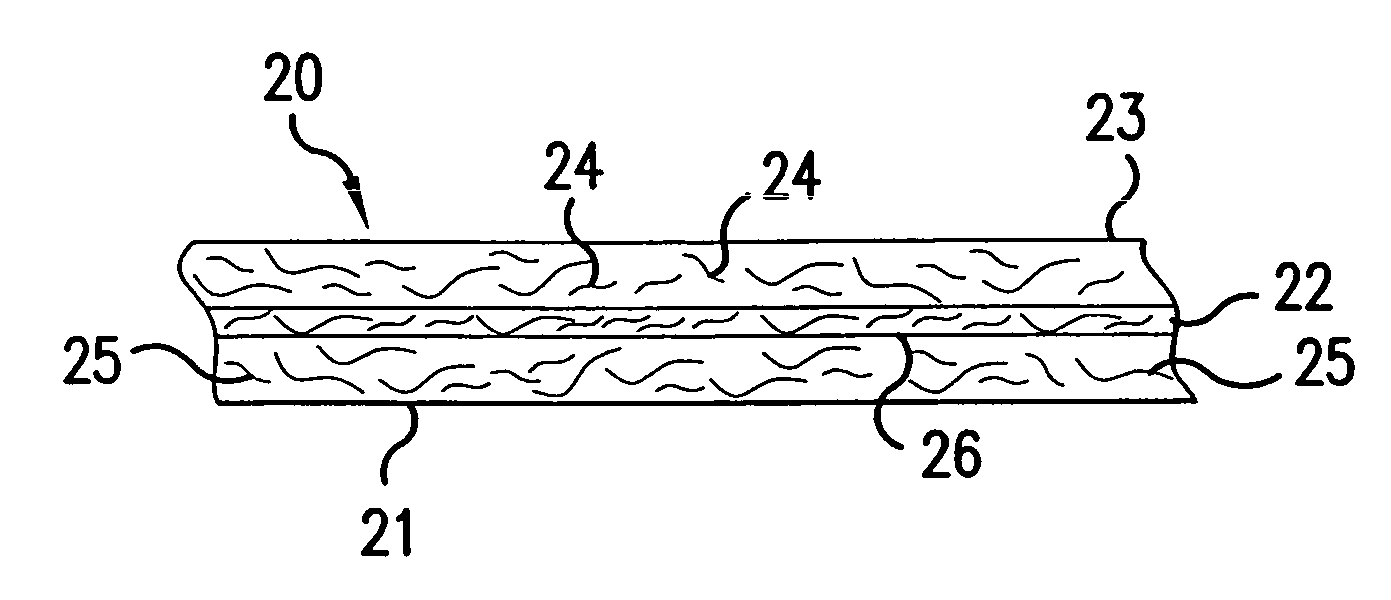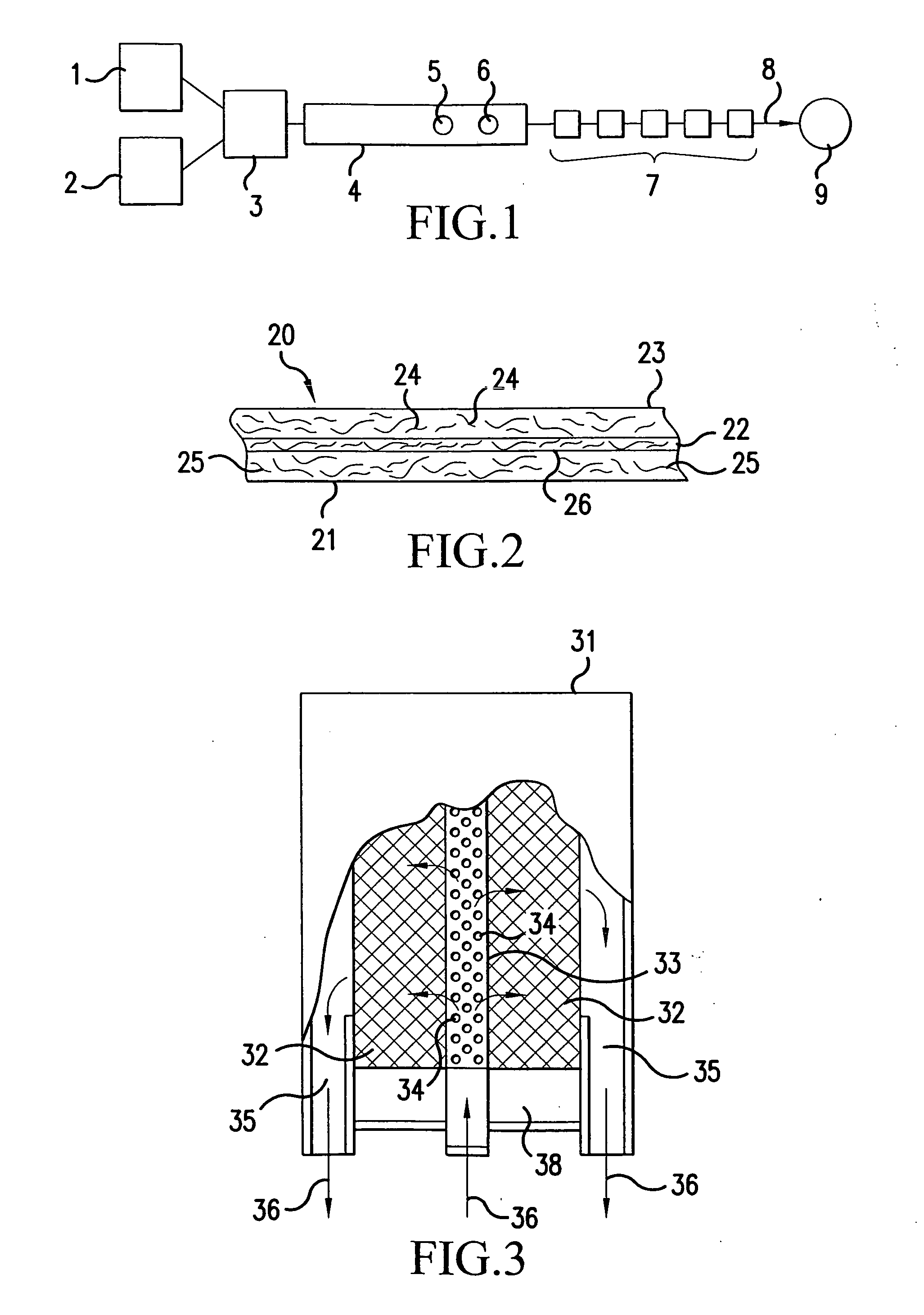High efficiency fuel filter
- Summary
- Abstract
- Description
- Claims
- Application Information
AI Technical Summary
Benefits of technology
Problems solved by technology
Method used
Image
Examples
example
[0051] In the present Example, as well as in the foregoing disclosure, all percentages and parts are by weight, unless otherwise indicated.
[0052] As an example of the present invention, a roll of filter material was prepared generally according to the above-described process and with the following particulars. A first feed stock was prepared as an aqueous slurry at a consistency of 2% with 85% dry weight cellulose fibers (Cellulose HP-11), 15% dry weight polyester fibers (Kosa T-103, 1.5 denier / 0.25 inch cut length) and 0.5% dispersing agent (Milease T). The slurry was pulped until a good dispersion is achieved (usually about 5-10 minutes). A second feed stock was prepared as an aqueous slurry at a consistency of 0.5% with 50% dry weight Johns Manville Code 106 microglass fibers, 45% Johns Manville Code 110 microglass fibers and 5% dry weight polyester fibers (Kosa T-103, 1.5 denier / 0.25 inch cut length, and sufficient sulfuric acid to reach a pH of about 2.5-3.5. The slurry was pu...
PUM
| Property | Measurement | Unit |
|---|---|---|
| Fraction | aaaaa | aaaaa |
| Fraction | aaaaa | aaaaa |
| Fraction | aaaaa | aaaaa |
Abstract
Description
Claims
Application Information
 Login to View More
Login to View More - R&D
- Intellectual Property
- Life Sciences
- Materials
- Tech Scout
- Unparalleled Data Quality
- Higher Quality Content
- 60% Fewer Hallucinations
Browse by: Latest US Patents, China's latest patents, Technical Efficacy Thesaurus, Application Domain, Technology Topic, Popular Technical Reports.
© 2025 PatSnap. All rights reserved.Legal|Privacy policy|Modern Slavery Act Transparency Statement|Sitemap|About US| Contact US: help@patsnap.com


